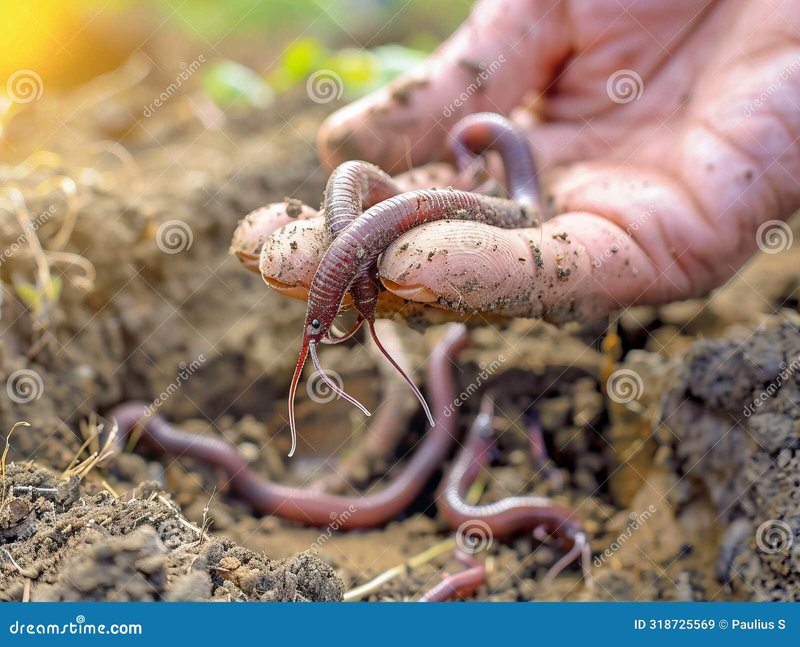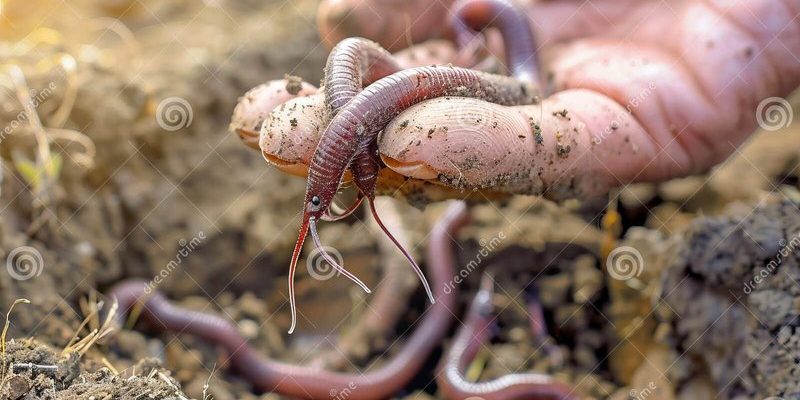
You might be wondering why earthworm conservation is so crucial. Well, with increasing urbanization and the use of synthetic fertilizers, their populations are declining. But the good news is that adopting organic practices in our gardening and farming can help. So let’s dive into some of the best organic practices to conserve earthworms and support a thriving ecosystem right beneath our feet.
Understanding the Role of Earthworms in Soil Health
Earthworms are often called “ecosystem engineers.” What does that mean? Essentially, they improve soil structure by burrowing through it, which helps with aeration and drainage. When they eat through organic matter, like leaves and decaying plants, they break it down into smaller particles. This process is known as *vermicomposting*, and it transforms waste into nutrient-rich fertilizer.
Moreover, the castings (or waste) that earthworms produce are packed with beneficial nutrients like nitrogen, phosphorus, and potassium—essential ingredients for healthy plants. So, when you see earthworms in your garden, think of them as little helpers working tirelessly to keep your plants thriving.
Choosing Organic Soil Amendments
To keep earthworms happy, using organic soil amendments is key. Chemicals in synthetic fertilizers can harm these beneficial creatures. Instead, consider natural options like compost, well-rotted manure, or leaf mold.
– **Compost**: It’s like giving your garden a nutrient boost! Compost is made from decomposed organic matter, and it enriches the soil without harming your earthworm friends.
– **Well-rotted Manure**: This is another fantastic option. Animal manure that has been aged will provide nutrients while being gentle on the earthworm population.
– **Leaf Mold**: If you have a pile of fallen leaves in your yard, let them decompose over time. Leaf mold is rich in organic matter and fosters a healthy environment for earthworms.
By choosing these natural amendments, you’re not just feeding your plants—you’re also creating a welcoming home for earthworms.
Practicing Minimal Tillage and Mulching
Tilling the soil might seem like a good way to prepare your garden, but it can actually harm earthworm populations. Each time you till, you disrupt their habitat and can even kill them. Instead, consider practicing *minimal tillage*.
– **Minimal Tillage**: This means disturbing the soil as little as possible. You can plant your seeds by making small holes instead of turning over the entire plot. This approach keeps the earthworm population intact and maintains the structure of the soil.
Mulching is also a great companion to minimal tillage. It helps retain moisture and keep the soil temperature stable while providing a habitat for earthworms.
– **Mulch Types**: Organic mulches, like straw, wood chips, or grass clippings, break down over time, feeding the earthworms as they decompose. Think of it as a buffet for them!
Creating a Diverse Planting Environment
One way to encourage earthworms is to foster biodiversity in your garden. Just like we enjoy variety in our diets, earthworms thrive in environments with diverse plant life.
– **Companion Planting**: This involves planting different species together that can benefit each other. For instance, pairing legumes with leafy greens can enhance nutrient availability. These plants add different organic materials to the soil, which earthworms love.
– **Native Plants**: Incorporating native plants can help create a conducive habitat for earthworms. These plants are often better adapted to local conditions, supporting a robust ecosystem.
By mixing it up and creating a garden that attracts various plants, you’re essentially rolling out the red carpet for earthworms to thrive.
Avoiding Pesticides and Chemicals
This might seem like common sense, but it’s important to highlight: pesticides and synthetic chemicals are a no-go if you want to protect earthworms. These substances can be toxic not only to pests but also to the earthworms we want to nurture.
– **Integrated Pest Management (IPM)**: Instead of using harsh chemicals, consider IPM techniques. This approach looks at the bigger picture—it’s about managing pests through natural methods like introducing beneficial insects and promoting plant health.
– **Natural Pesticides**: If you absolutely must deal with pests, opt for natural alternatives like neem oil or insecticidal soap. They’re less likely to harm the fragile earthworm population in your garden.
By being conscious of what you’re using on your plants, you’re also looking out for the earthworms that make your soil healthy.
Encouraging Natural Habitats
Creating an environment where earthworms can thrive goes beyond just the soil. It involves fostering a natural habitat that meets their needs.
– **Leave Some Ground Undisturbed**: If you have areas in your yard that can remain undisturbed, consider leaving them as is. Over time, this natural setting allows earthworm populations to grow without interference.
– **Water Management**: Earthworms need moisture to survive, so ensuring your garden has proper drainage and regular watering is crucial. Too much water can drown them, while too little can dry them out.
By looking at your garden holistically, you’re crafting a sanctuary for earthworms, benefiting not just them but your entire garden ecosystem.
Monitoring and Assessing Earthworm Populations
Finally, it’s essential to keep an eye on your earthworm populations. Monitoring can help you understand how well your conservation practices are working.
– **Simple Soil Tests**: You can conduct a simple test to check for earthworm activity. Dig a small hole in your garden and see how many earthworms you find. A thriving population indicates a healthy soil ecosystem!
– **Adjusting Practices**: If you notice fewer earthworms over time, it may be a sign to revisit your practices. Are you using too many chemicals? Is there too much disturbance? Regular assessments can guide your actions and keep your garden thriving.
By being proactive and aware of the earthworm populations, you’re ensuring that your conservation efforts are genuinely making a difference.
In conclusion, conserving earthworms through organic practices is not just about saving these little creatures; it’s about nurturing the entire ecosystem. By choosing organic amendments, minimizing tillage, promoting biodiversity, avoiding chemicals, creating natural habitats, and monitoring populations, you’re playing your part in sustaining a healthy environment. Just think about it: with a little effort, you can help turn your garden into a thriving habitat for earthworms, making it healthier and more productive for your plants, too. Happy gardening!

